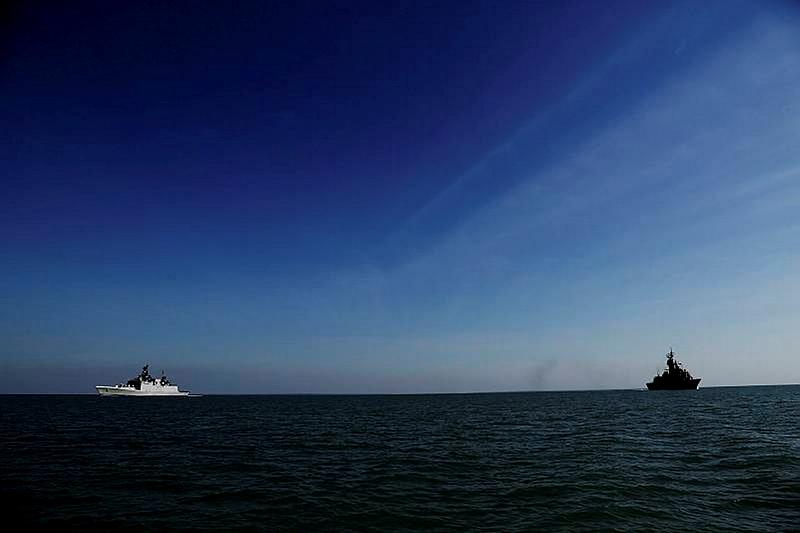 Along with the submarine replacement program, the size and scope of Army’s future fleet of protected vehicles under Project LAND 400 and the future of the surface fleet are the other big capability choices for the Abbott government. That’s why ASPI will be taking a hard look at both subjects this year, and will run major conferences on both topics. The first, from 30 March to 1 April, will discuss Australia’s future surface fleet. Registration will open in mid-February. In May, ASPI will run a separate event on the future structure of Army and the LAND 400 program.
Along with the submarine replacement program, the size and scope of Army’s future fleet of protected vehicles under Project LAND 400 and the future of the surface fleet are the other big capability choices for the Abbott government. That’s why ASPI will be taking a hard look at both subjects this year, and will run major conferences on both topics. The first, from 30 March to 1 April, will discuss Australia’s future surface fleet. Registration will open in mid-February. In May, ASPI will run a separate event on the future structure of Army and the LAND 400 program.
The future of the Navy’s surface fleet isn’t simply about choosing the vessels. There has been much political, public and media attention on the impact of program decisions on Australia’s naval shipbuilding sector. While the factors determining Navy’s future surface fleet are (or at least should be) shaped by strategic considerations, unavoidably they’ve become entangled with questions of construction. Over the coming weeks, the Strategist will run a series of posts related to the strategic, operational, international and industrial factors involved in decisions about the future surface fleet.
Strategically, the RAN’s surface fleet has been the key asset in implementing Australia’s maritime strategy. Australia’s economic prosperity depends significantly on freedom of navigation. For more than a decade, surface ships have experienced a high tempo of operations being deployed on a wide range of missions, including counter-piracy and humanitarian assistance and disaster relief (HADR). Overall, the threat environment was relatively benign, but that’s likely to change. Other countries in the Asia–Pacific region, most notably China, are increasing the number of their major surface combatants. They’re also investing in increasingly sophisticated anti-ship missiles and submarines. Consequently, establishing ‘sea control’ in anti-access/area-denial (A2/AD) environments could become more challenging, particularly for Australia’s capable but relatively small fleet of surface combatants. This isn’t to echo the argument (made, for instance, here) that the RAN’s major surface fleet might become obsolete as a result of modern anti-ship weaponry. Rather, what’s needed is an informed and comprehensive debate on how the surface fleet might need to be optimised to operate under those conditions, and what that implies for numbers, design, armaments, sensors and the like—and potentially whether the underlying strategy and doctrine needs to be rethought.
The US Navy’s (USN) new surface warfare strategy is worth looking at in terms of its potential to inform RAN thinking. Senior USN officers used the 2015 Surface Navy Association National Symposium and other outlets to promote the new concept of ‘distributed lethality’. The key idea is that, in order to enable sea control in A2/AD environments, the surface fleet needs to be arrayed more widely across the operational theatre and equipped with more sophisticated sensors and defensive and offensive weapon systems. Through dispersed operations and increased unit lethality, adversaries would face significant planning and targeting problems. Future platforms won’t only feature enhanced defensive capabilities against cruise and ballistic missiles, and (potentially) a new long-range anti-submarine weapon. They’ll also be equipped with new, offensive long-range anti-surface weapons. That includes smaller surface combatants such as the Littoral Combat Ship (LCS) which recently test-fired a Norwegian Naval Strike Missile (NSM); even support vessels might become more lethal.
The USN’s new approach reflects a recent study by the Center for Strategic and Budgetary Assessment (CSBA), which also advocated a shift of surface combatants from reactive defence against adversaries’ offensive weapons towards a mix of enhanced offensive armaments and increased inner-layer defences. It also sends an important message to Asia–Pacific allies (including Australia), partners and potential adversaries (e.g. China) that the USN will be able and willing to operate in denied maritime environments.
While the RAN can’t compare with the size and ambition of the USN, its future surface fleet is likely to face a similar threat environment, not least since the Australian Defence Force (ADF) is moving towards ever closer cooperation with our US ally. As well, Australia’s currently acquiring a significantly heavier surface fleet, comprising three new Air Warfare Destroyers, two amphibious assault ships (LHDs) and a yet to be specified number of frigates, likely to be larger and more capable than the ANZAC class vessels they’ll replace. What’s lacking, however, is a political and public debate on how those new platforms will be combined to enhance the ADF’s maritime power-projection capability.
ASPI’s 2015 Conference will put a spotlight on the key questions: What does the future operating environment for Australia’s future surface fleet look like? What are allies’ and partners’ expectations? Does the RAN need a more capable surface fleet, and what are the implications for personnel, resources and other Defence priorities? How should the surface fleet be organised and equipped to deal with the A2/AD challenges? What is the RAN’s equivalent to the USN’s ‘distributed lethality’ concept? And what emerging-technology options might transform Navy capability into the future?
Benjamin Schreer is a senior analyst at ASPI. Image courtesy of Department of Defence.